Longnosed Snakes are usually patterned with speckled black and white bands, with varying amounts of red or orange coloration. As hatchlings, they may completely lack any red coloration whatsoever, making them look very similar to Kingsnakes. They range in size between about 7″ as a hatchling, to around 3′ as adults. In addition to being often mistaken for a Kingsnake, this snake is frequently misidentified as a Sonoran Coralsnake. Longnosed Snakes are completely harmless, and almost never bite, even if provoked to an extreme level. Their primary defense is to defecate and musk when picked up, as well as occasionally bleed from the cloaca. This is meant as a deterrant to predators, who may not want a mouthful of nasty goop. During the monsoon season each year, Longnosed Snakes hatch from eggs and wander in search of food. During these first weeks of life, they often find their way into homes.
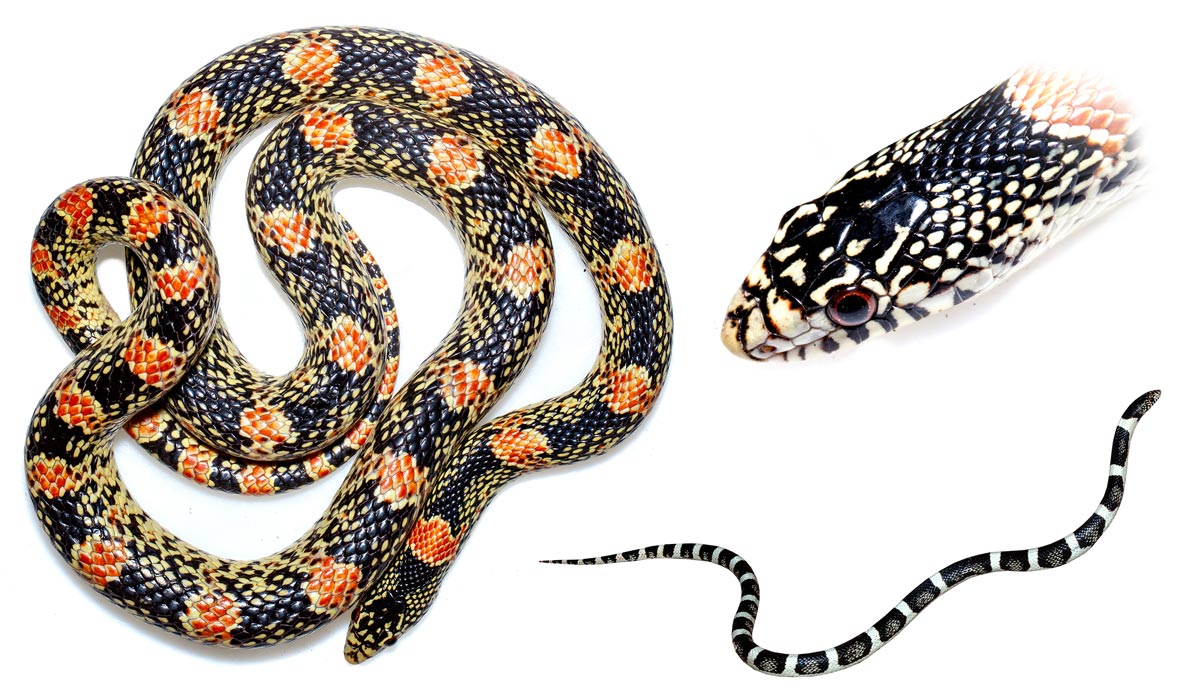
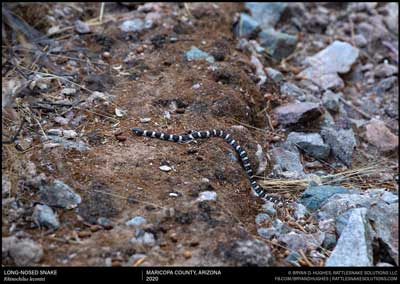
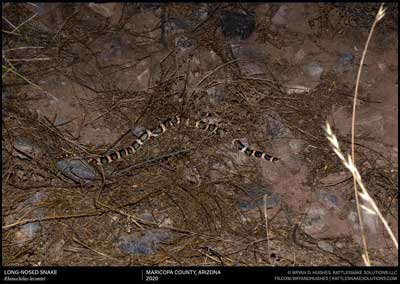
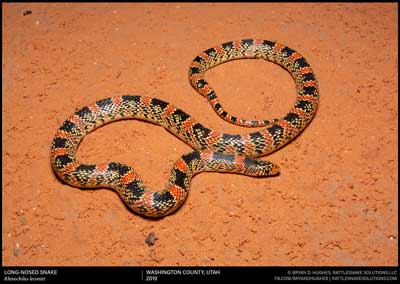
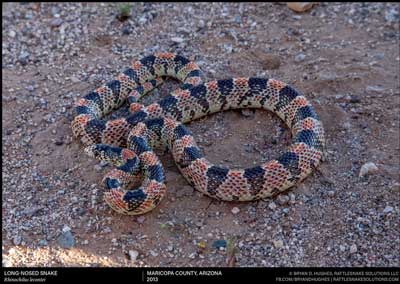
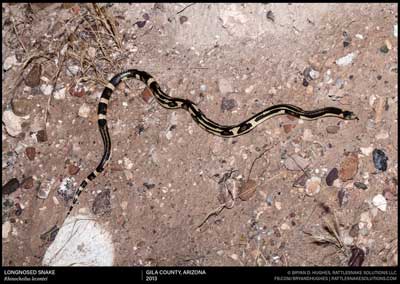
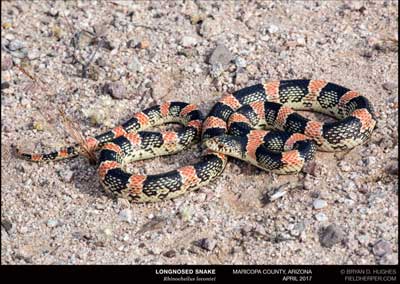
Confusion with Kingsnakes
Although the Longnosed Snake is exceptionally common throughout its range, and frequently encountered, its identity is not widely known. This is due to its superficial similarity with the more famouse California Kingsnake. The Kingsnake, an eater of rattlesnakes and well received by most homeowners, is similarly banded with black and white. Confusion with the Arizona Mountain Kingsnakes and common taxonimic misunderstandings (example: Arizona Mountain Kingsnakes and California Kingsnakes being subspecies of a single species) are more often cited as a reasoning for red coloration than is the correct identification of Longnosed Snake.
In areas where the Longnosed Snake is found, it can be differentiated from the California Kingsnake, most often, by the presence of red or orange coloration between darker bands. This reddish coloration can be solid and vivid, or just a light blush over some scales. In comparison, the Kingsnakes never have this color.
Some individuals are lacking the red/orange color completely, appearing quite similar to the Kingsnakes for whom they are often confused. These snakes may be identified as Longnosed Snakes by the presence of white or grey smudges within the sides of each black band. The head and face, as the name suggests, is longer and more pointed in the snout than the Kingsnake, which has a more broad and rounded face.
Confusion with Sonoran Coralsnakes
Of all snake species in Arizona, despite others having much more similarity, the Longnosed Snake is the most often to be confused with the venomous Sonoran Coralsnake. This is due to a common rhyme that is most useful in the Eastern United States, which states that snakes with red touching yellow to be venomous Coralsnakes. Unfortunately, this rhyme is not useful in Arizona – the unfortunate result is the needless death of many harmless Longnosed Snakes due to loose adherence to the rhyme.
Videos featuring this species:
- Harmless
- Very Commonly encountered
- No action necessary
- Snake fencing somewhat effective
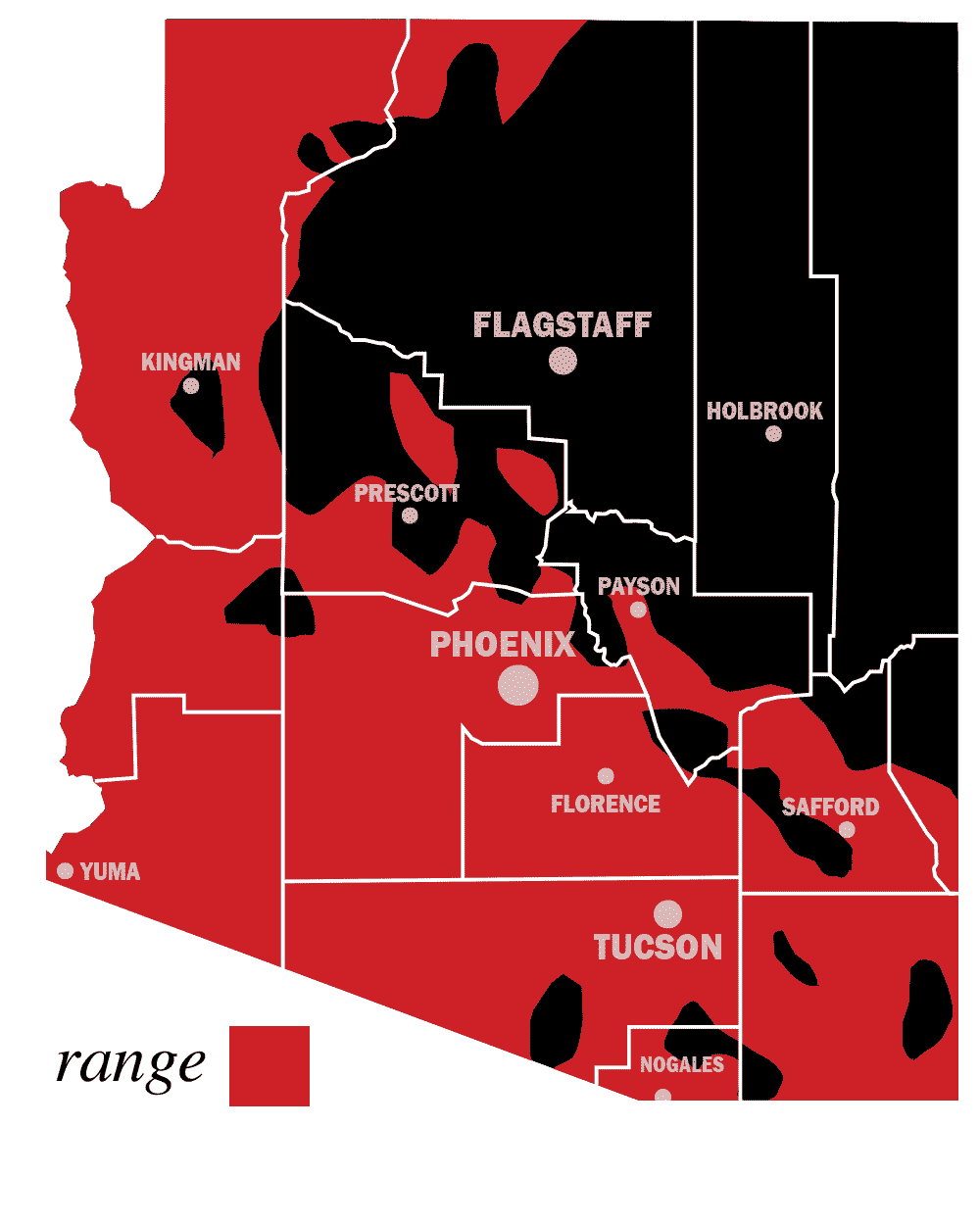
Often confused with:
California Kingsnake
Sonoran Coralsnake